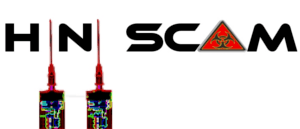
 Do governments use humans similar to the way we use ATMs for spitting out cash?
Do governments use humans similar to the way we use ATMs for spitting out cash?
It may be as easy as declaring a national emergency.
Remember the whispers of a major pandemic last spring? We were on the brink of the worst flu epidemic in human history. As the year progressed the media hype reached epic and, at times, almost hysterical levels. Then it happened.
The Obama Administration was pressured to officially declare a Stafford Act National Emergency. In turn, the emergency declaration automatically made millions of federal grant dollars monies available to state governments. But the pandemic never materialized. One naturally would expect that the federal grants intended for the H1N1 pandemic would be returned – right? How about wrong!
So what happened with all of the money appropriated and made available to states?
In Colorado, at least, half a million dollars of that federal grant money was “reallocated” to purchase an “new” immunization registry for infants and adults. This is known as the vaccine tracking system that stores vaccine records on every person from cradle to grave. Even if parents decided not to have their child vaccinated that information is entered into this vaccine tracking system.
Illustrating the point, a press release from the State of Colorado (http://www.cdphe.state.co.us/release…) reported that in 2009 it received five million dollars in federal funds to assist in H1N1 planning. According to the press release, federal grant money was to be used in the following manner:
“$1.4 million to be used to prepare… [Colorado hospitals to] augment their infrastructures to better respond to the citizens of Colorado during a potential pandemic influenza outbreak.”
“$4 million support the state and local public health infrastructure, including these measures:
- strengthening and sustaining the public health work force
- increasing laboratory capacity and capability
- strengthening disease surveillance activities
- planning and implementing possible large-scale mass vaccination activities
- developing and communicating effective public guidance to lessen the impact of the illness in communities
- purchasing and procuring personal protective equipment, antivirals and other pandemic-related purchases for protecting the public health work force
- training and educating of the public health work force
- community and personal preparedness activities
- addressing gaps and other public health preparedness challenges related to public health preparedness and response to an influenza pandemic.”
By all appearances the intentions behind the federal grant are very noble – the last point being the “catch all” category. Although, it appears there may have been an “Oops-a-Daisy” on the part of the State of Colorado’s website.
A memo sent dated June 18th, 2010 (http://www.cdphe.state.co.us/dc/immunization…) reveals over a half a million dollars is being used from the federal H1N1 grant money to purchase a new immunization registry software application. In order to meet the spending requirements from the grant, the money had to be spent and the system installed by July 30, 2010.
Some people have called this a “bait and switch” or a misappropriation of funds. In the past, others would have considered this a “slush fund”. Frankly, I’m surprised the memo was made available publicly. As a result, we can use this as a teachable moment.
Looking back, it appears the pandemic scare of 2009 may have been used as a pretext for states to purchase new “toys”. In days when money is becoming more difficult to come by, a pandemic scare was just another way of ‘sucker punching’ the public into coughing up more money and still feel good about it.
Given that U.S. citizens just spent billions bailing out banks, should we be surprised? Hardly.
Conclusion
The purchase of a new immunization-tracking registry with H1N1 pandemic emergency funds doesn’t appear to meet the intended purpose originally stated in the national emergency declaration. Therefore the money should have been returned and not spent. However, we know that governments – whether state or federal – are notgood stewards of money.
Let this be yet another lesson learned on a common “bait-and-switch” tactic used by governments to spend money that they don’t have. Governments have learned when they have “free money” they either use it or lose it.
How do governments use you like an ATM spitting out free cash? Easy…
Just declare a national emergency.
